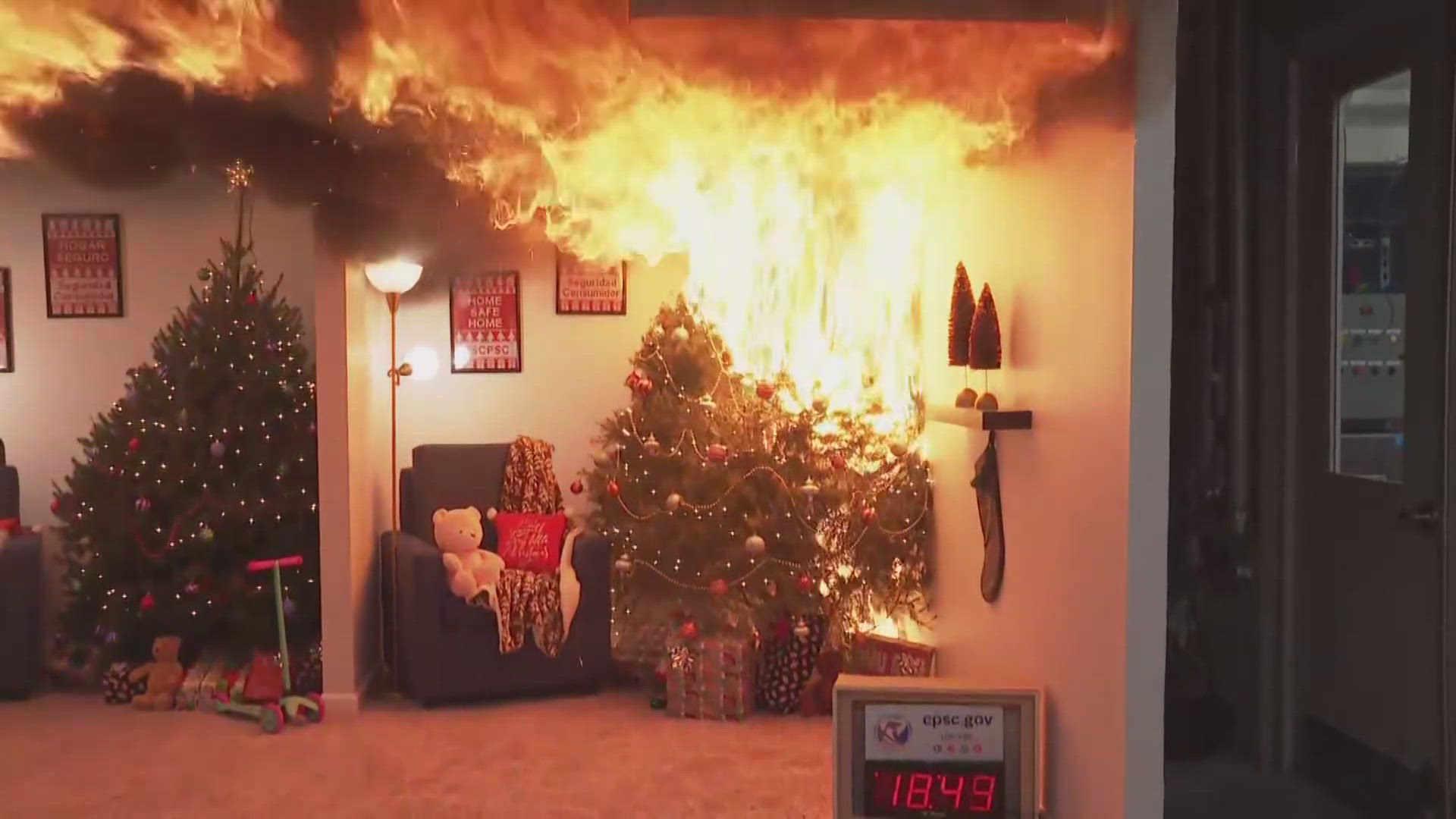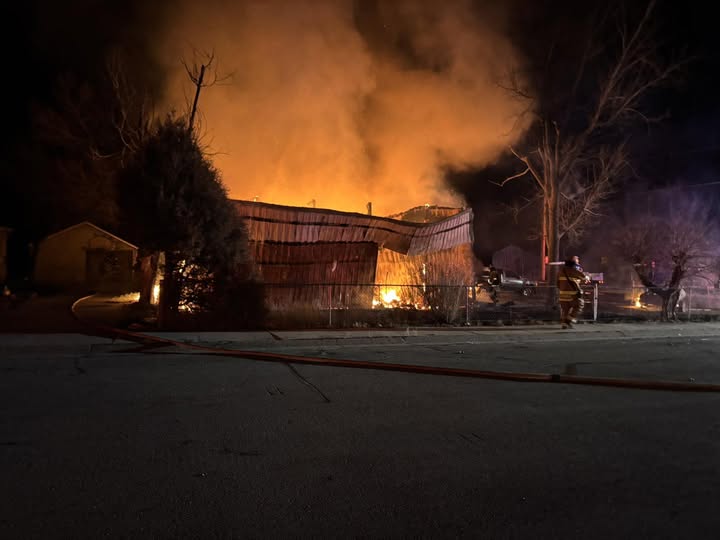UNDATED – South Dakota received nearly $14 billion in federal COVID-19 funding from March 2020 through January, according to an internal state fiscal report obtained exclusively by South Dakota News Watch.
The document tallies the $13.84 billion intended to help governments, businesses, organizations and individuals survive and recover from a pandemic that killed 1 million Americans and more than 3,100 South Dakotans.
The federal funding came from six separate acts of Congress and was part of an overall $4.6 trillion in federal COVID-19 aid provided to states.
State government received about $4.2 billion, while the remaining $9.6 billion went directly to local governments, health care providers, the education system, businesses and individuals, according to Gov. Kristi Noem’s office.
The specific answer of where the money went lies amid a complicated conglomeration of spending initiatives undertaken by the state, local governments and federal agencies. The effort sought to save lives, protect a fragile economy and provide a sense of normalcy to how people will live in a post-pandemic world.
The state report reveals that multi-million-dollar initiatives were enacted to diagnose and treat people with COVID-19; to reduce further infections and provide life-saving vaccines; to help businesses stay afloat and keep individual workers employed, fed and in their homes; to provide critical aid to low-income and elderly populations; and to help educate children and adults during a massive disruption in the public education system.
The state report notes that some of the stimulus money was allocated but has not yet been spent. Some funding may have shifted from one program or agency to another after it was received.
U.S. Sen. Mike Rounds, R-S.D., said the early days of the pandemic were a time of strong bipartisan efforts by Congress to provide states with the funding and resources necessary to battle one of the biggest crises in American history.
“The context was one of a national emergency,” he told News Watch. “And it was a matter of trying to save lives and at the same time to prevent a total economic collapse because of what was anticipated to be a very severe pandemic.”
Noem declined a request for an interview but through her spokesman said the state used the federal stimulus money “wisely” to aid the state during the pandemic.
Spokesman Ian Fury said in an email to News Watch that the governor approached use of federal pandemic funding in a conservative fashion. She rejected former President Donald Trump’s offer of extended unemployment benefits for state workers in August 2020 and also sent back more than $80 million in rental assistance.
“We focused on solving long-term problems with one-time investments rather than creating new government programs,” Fury wrote. “We are confident that we utilized that money more wisely than other states would have.”
Tim Rave, CEO of the South Dakota Association of Health Care Organizations, said the federal funding provided to public and private health care providers in South Dakota is unquestionably a large amount.
“The big thing it bought was access, because without that money, it’s not hard to imagine closures of health care facilities or limits on services. And when you start taking away access to health care, it ultimately leads to loss of life or increased burdens on families and patients,” Rave said.
Rounds said President Donald Trump and Congress allocated funding to states and allowed some leeway on how money was spent on the local level.
“If anything, we erred on the high side in terms of authorizing resources,” Rounds said. “There was a concern if we did nothing, there was a concern we could lose 5% of our population.”
Resting at the center of the entire COVID-19 pandemic, the health care industry in South Dakota endured some of the toughest challenges and also received some of the largest federal funding levels in response.
The state Department of Health received more than $282 million in federal funding, and the state medical industry was allocated hundreds of millions more to diagnose, treat and respond to patients sickened by the coronavirus.
Urban and rural hospitals received another $445 million in other pandemic aid known as Provider Relief Funds that did not flow through the state health department.
The federal funding helped keep people healthy in other ways.
About $100 million was provided to provide food and nutrition to families and schoolchildren. Another $235 million was provided in additional unemployment compensation to people who could not work during the pandemic.
Some of the federal funding went directly to help nursing homes and other long-term care facilities in South Dakota stay open and as safe as possible during the pandemic, said Mark Deak, executive director of the South Dakota Health Care Association.
In South Dakota, skilled nursing facilities received about $145 million overall in federal pandemic funding, which helped keep facilities open and keep staff and residents alive, Deak said in an email to News Watch.
“This funding was absolutely crucial during the height of the pandemic,” he wrote.
A sense of pure panic struck businesses both small and large across South Dakota in the spring of 2020 as initial fears of the pandemic brought supply chains and customer visits in large part to a halt.
The state Bureau of Finance and Management was the single-largest recipient of federal pandemic funds among all state departments, receiving almost $2.9 billion, according to the state fiscal report.
But huge amounts of federal funds flowed to South Dakota businesses and employees without moving through state agencies.
More than $2.7 billion went to businesses to keep employees on the payroll through the Paycheck Protection Program of 2021. Another $895 million in 30-year Economic Injury Disaster Loans were offered to small businesses and non-profit organizations in 2021. The state report also includes line items for Economic Impact Payments to businesses of $795 million under the CARES Act and another $1.1 billion in Economic Impact Payments that are available through the ongoing American Rescue Plan Act (ARPA).
With nearly 24,000 students, 1,800 teachers and nearly 40 instructional buildings, the Sioux Falls School District had two main objectives in the pandemic, according to Kirk Zeeck, director of federal programs and language immersion for the district.
“We took steps to help kids and staff be safe and yet still try to get some learning done,” he said.
The Sioux Falls district received about $58 million of that money, which was used the past three years and into this school year for a variety of efforts to keep schools and students on track, Zeeck said.
Brian Maher, executive director of the South Dakota Board of Regents, said the federal government provided about $86 million to the regental system over roughly the past three years and about $83 of that funding has been spent so far.
The pandemic hit South Dakota farmers, ranchers and food processors hard, especially in the early days, said Scott VanderWal of the South Dakota Farm Bureau.
The primary program that helped farmers, ranchers and other producers was the Coronavirus Food Assistance Program. The state report shows that nearly $1.4 billion in funding from that program was or will be provided directly to agriculture producers hit with price declines and additional marketing costs.
South Dakotans in the agriculture industry also benefited from the state Coronavirus Relief Fund, a part of the federal CARES Act, which provided roughly a half-billion dollars to nearly 6,000 businesses and individuals in 2021 who suffered losses due to the pandemic. About $71 million of that money went to the agriculture, forestry and fishing industries, according to state records.
The CARES Act of March 2020 provided two separate allocations specifically to U.S. tribal governments, including $400 million under the Operation of Indian Programs appropriation and an $8 billion funding effort for tribes within the Coronavirus Relief Fund.
The ARPA program signed by President Biden in 2021 has a $20 billion funding allocation specifically for tribal governments.
The Rosebud Sioux Tribe in central South Dakota invested federal fiscal recovery funds to build affordable housing on the reservation, according to the Treasury.
The Sissteon-Wahpeton Oyate in northeastern South Dakota embarked on several spending initiatives to help keep residents safe during the pandemic. The tribe used federal money to build a COVID-19 quarantine and recovery center next to a local Indian Health Services hospital to keep infected residents isolated and prevent further spread of the coronavirus.












